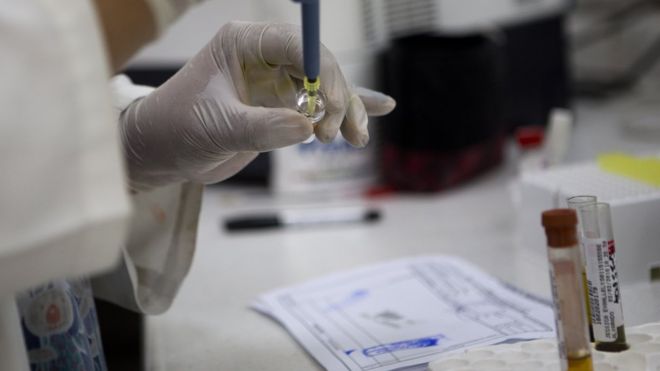By Dr. Artur Timerman
In my first years of medical practice, dealing with AIDS at that time was invariably fatal. Years later, still battling HIV, we are now faced with another outbreak of a similar nature – the Zika virus. I remember the time when we did not have a clinical-epidemiological diagnosis of a new disease. I remember the era when we did not have a precise etiologic diagnosis. I remember a time when we had not yet discovered the virus responsible for AIDS. Pathogenesis was discussed by inferences but it took us four years to discover HIV (then HTLV-III or LAV) and even more time to understand how it caused immunodeficiency, although a lot still needs to be learned.
Now we find ourselves facing similar challenges with the Zika outbreak. We do not have serological markers of Zika yet, we do not know how it causes microcephaly, and there is still a lot of uncertainty regarding epidemiology, clinical diagnosis, and prevention.
The Zika virus is primarily transmitted to people through the bite of an infected Aedes mosquito. This is the same mosquito that transmits dengue and chikungunya. In Brazil, we now have three major epidemics transmitted by one single vector, the Aedes aegypti mosquito: dengue since 1986; chikungunya since 2013, and Zika likely since 2014.
Sexual transmission of Zika is also possible as we now know that the virus can spread by men to their sex partners. However, we still do not know enough about sexual transmission of Zika, such as how long the virus remains in the sperm and whether women can transmit the virus to their sex partner. With more cases of sexually transmitted Zika emerging, we must continue to closely monitor and track sexual transmission routes.
The situation in Brazil is overwhelming. We are in urgent need of serological tests in order to better understand the Zika epidemic. According to our Ministry of Health (MOH) more than 1.5 million cases of Zika infections occurred in 2015. This is an explosive number, greater than you would expect for an infection so recently introduced into our society.
I personally have followed two HIV patients diagnosed with the Zika infection, who have no complications at all. I did not observe any impact of their Zika infection in terms of virological or immunological parameters.
We previously had the same experience regarding dengue and HIV coinfection, and retrospectively analyzed the problem of dengue in HIV cases at different stages. Some studies revealed that the clinical profile of concurrent dengue and HIV are not different. This may indicate that dengue does not accelerate the progression of HIV, however, we need more studies regarding the short and long term effects of HIV and Zika coinfection.
However, I am even more concerned about how to protect pregnant women, how to control the virus, and how to conduct an intensive fight against mosquitoes – which is the main cause for the massive spread of this outbreak.
Consequently, this alarming discovery has prompted health authorities, including the Pan American Health Organization and the Centers for Disease Control and Prevention (CDC), to swiftly issue travel alerts to pregnant women and women planning pregnancies to postpone any travel to countries at risk of Zika transmission, and recommendations to those living in Zika affected areas to avoid exposure to mosquitoes. The Brazilian government has even issued warnings to women advising them to avoid and postpone becoming pregnant while the virus remains at large. However, I believe we should go further and educate both men and women about the actual risks of being pregnant in this environment. If we prioritize making evidence-based information widely available, then individuals can make informed decisions about their own health.
We must extrapolate what was acquired in HIV research and apply this to Zika research to pursue basic science advances and improve knowledge of pathogenesis. This will be fundamental for obtaining more information regarding the interaction of Zika and HIV at the patient level.
For 30 years, Brazil has been fighting the Aedes aegypti mosquitoes and with unsuccessful results, as demonstrated by the Zika outbreak and the largest dengue epidemic ever reported in Brazil just last year. Our urbanization model is the perfect breeding ground for mosquitoes and that is the challenge we are facing, which requires national mobilization, including state-owned companies, government ministries, city mayors, and the army. What the HIV epidemic continues to teach us is the importance of community mobilization, such as advocacy and community outreach and education campaigns, to overcome legal barriers, misinformation and stigma. This is exactly the type of mobilization we require to bring the Zika virus to an end.
Today, I am sharing my story to bring attention to the critical research investment needed to control and combat these outbreaks in the future.
Dr. Artur Timerman is a medical doctor of infectious diseases and an IAS member since 1994. He is currently working in Brazil as the President of Sociedade Brasileira de Dengue e Arboviroses. In this role, Artur has been providing public information on the Zika outbreak since it was first described in 16 patients in April 2015. Since that time, Zika has spread across Latin America, with tragic consequences that parallel the emergence of AIDS more than 30 years ago. In May 2015, the public health authorities of Brazil confirmed the transmission of the Zika virus in the northeast of the country. Since that time, Zika transmission is now reported in 18 countries in Latin America and the Caribbean, as well as several other territories, and the World Health Organization (WHO) predicts it could affect 4 million people across the Americas this year alone. Artur shares what the situation is like in Brazil, what his research is showing, and how we need to combat the outbreak.




